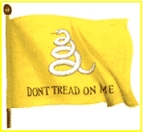ORIGINAL: vahauser
What Colin said.
Even in dense assaulting environments, the most densely-packed divisions take up at least 10-15 square kilometers each. And since the area of a 10km hex is 86.60 square kilometers, then trying to cram 9 divisions within that area is historically ridiculous.
For example, the II SS Panzerkorps at Kursk (3 large divisions plus supporting troops) attacked along a frontage of approximately 3-4km per division. This was considered to be a very dense assault frontage. In TOAW III terms, this means that the II SS Panzerkorps probably couldn't be squeezed into a 10km hex (at least not realistically), but it could fit into a 15km hex. And a 15km hex has an area of 194.86 square kilometers.
EDIT: We're talking WW2 densities here. A Napoleonic army could fit into a 10km hex because the unit densities were so much greater in 1805 than in 1943.
Based on Seelowe, OPART will allow about one regiment plus bits in a 5 km hex before it starts applying density penalties. That seems a bit too stiff to me -- not too lenient. Also, armor is really bad. You move a brigade with circa a hundred tanks into that 5 km area, you can't add much else without getting at least a yellow light.









